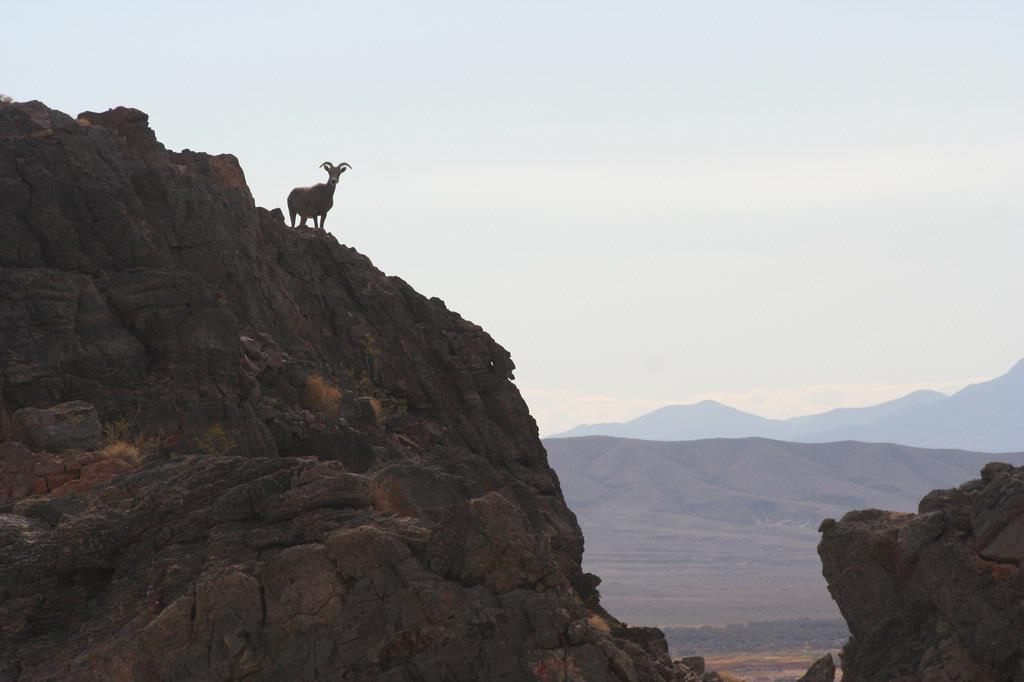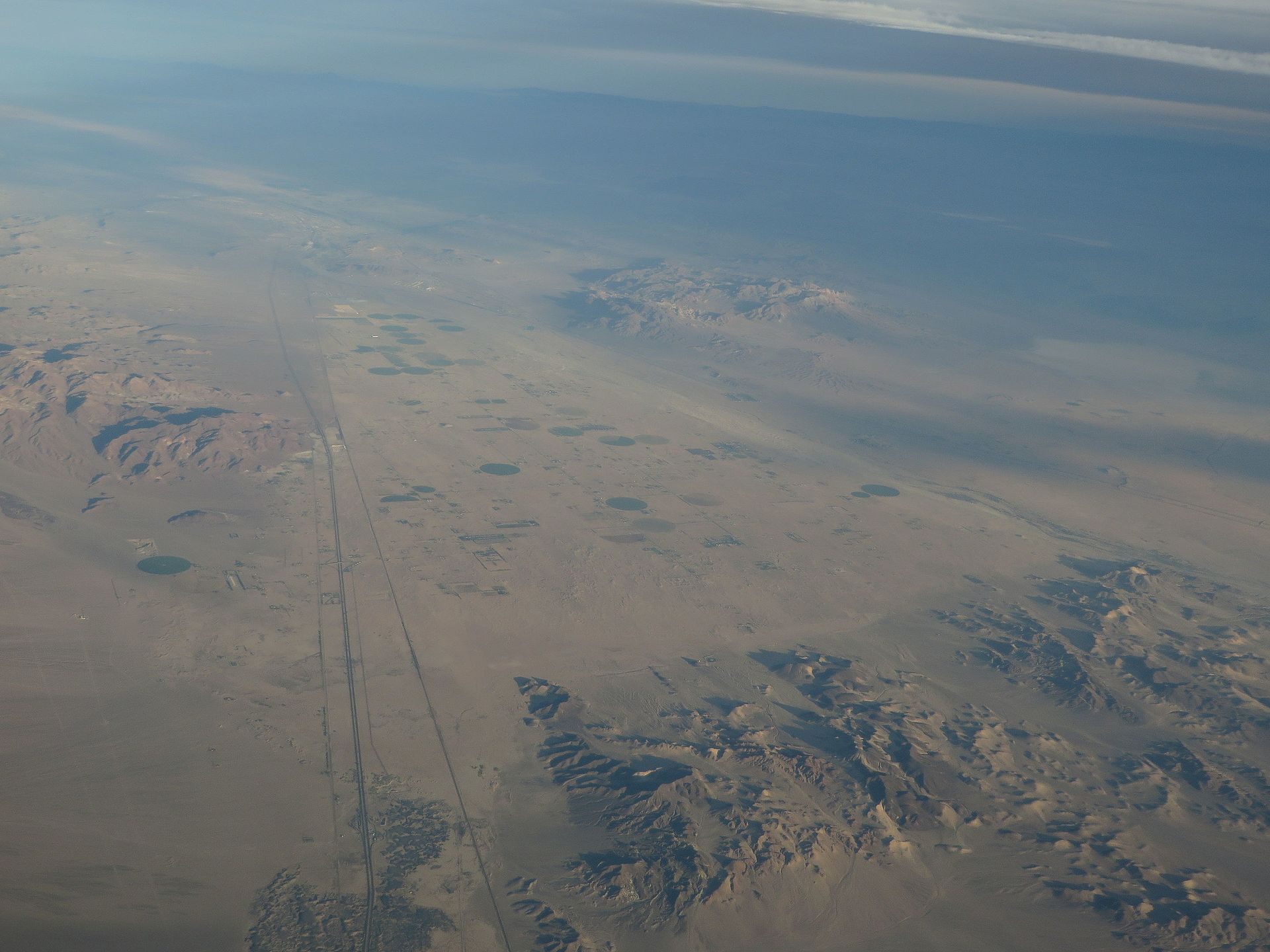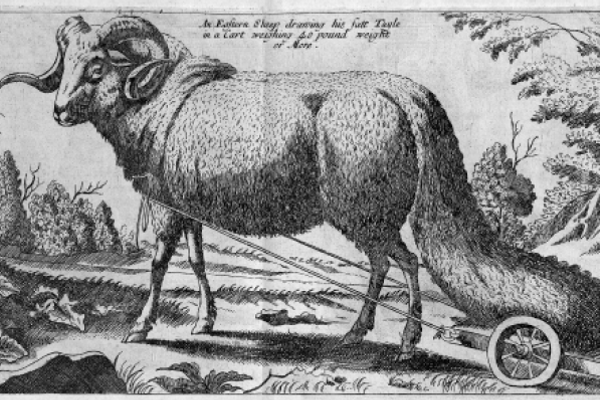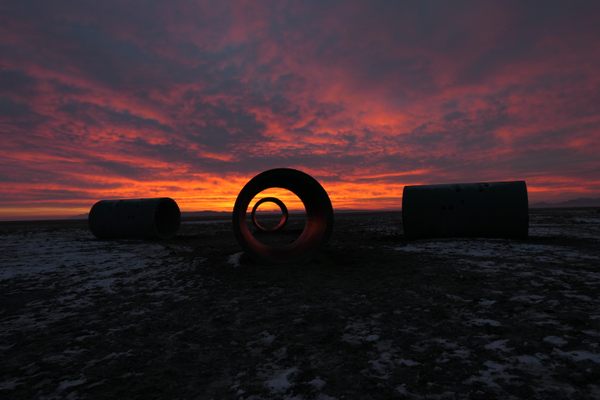When Bighorn Sheep Decide to Cross a Highway
For decades, they stayed on either side of Interstate 40, but those days appear to be over.

At this point, everyone knows the ups and downs of chicken transit. Other creatures, though, prove a bit more mysterious. Take the bighorn sheep who wander California’s Mojave Desert. For decades, these creatures hauled their curly horns up and down the desert’s rocky peaks, generally living in small herds of two or three dozen. They didn’t mess with Interstate 40, the four-lane road that has cut through their territory since the 1960s.
But according to a recent study, the sheep have changed their ways—all of a sudden, they’re crossing the road.
The study’s lead author, Clinton Epps, has been studying these populations since the early 2000s, when he was a Ph.D. student at UC Berkeley. At that point, he says, the small herds of sheep that lived on the north side of I-40 didn’t mingle with those on the south side. “Since the construction of the highway in the mid- to late-1960s, these little tiny populations on either side had kind of been cut off from each other,” he says.

Then, in 2013, sheep started getting sick. Members of a herd living near Old Dad Mountain, north of the highway, contracted pneumonia. A couple of months later, sheep south of the highway, in the Marble Mountains, got it, too. Tests revealed that it was the same strain. “We saw the pathogen jump to the other side,” says Epps. “There was a clear suggestion… that something had changed.”
So Epps took another close look, collecting more sheep DNA from individuals and fecal samples and using it to figure out which sheep went where. One in particular has been caught red-hoofed: In August 2014, Epps and his colleagues collected pellets from a ram in the Granite Mountains, on the north side of the freeway. That same November, they captured, collared, and genotyped that same ram on the south side. But he’s probably not the only one: “The genetic data suggests that multiple animals have moved,” says Epps.
What was it that changed? Maybe the sheep got bolder. “The population to the south there has been pretty large for a while now,” says Epps. “Perhaps there’s more pressure for individuals to go and explore and look for other places.” Or maybe the road got easier to cross. Fences have degraded in certain areas, although the more potent barrier—the noise and flash of cars—has not diminished.

For conservationists, the fact that sheep have learned to cross is encouraging: “These populations are so small, the interchange among them is really important,” Epps says. Further study might help wildlife officials figure out how and where to encourage safe traversals, as they’ve done with grizzly bears in Canada and squirrels in Washington State.
But as Epps is careful to point out, we can really only speculate as to what motivated them. “We go out, and we study what animals are doing in a time and a place,” he says. “We have to remember that they may do something different now and again.”


























Follow us on Twitter to get the latest on the world's hidden wonders.
Like us on Facebook to get the latest on the world's hidden wonders.
Follow us on Twitter Like us on Facebook